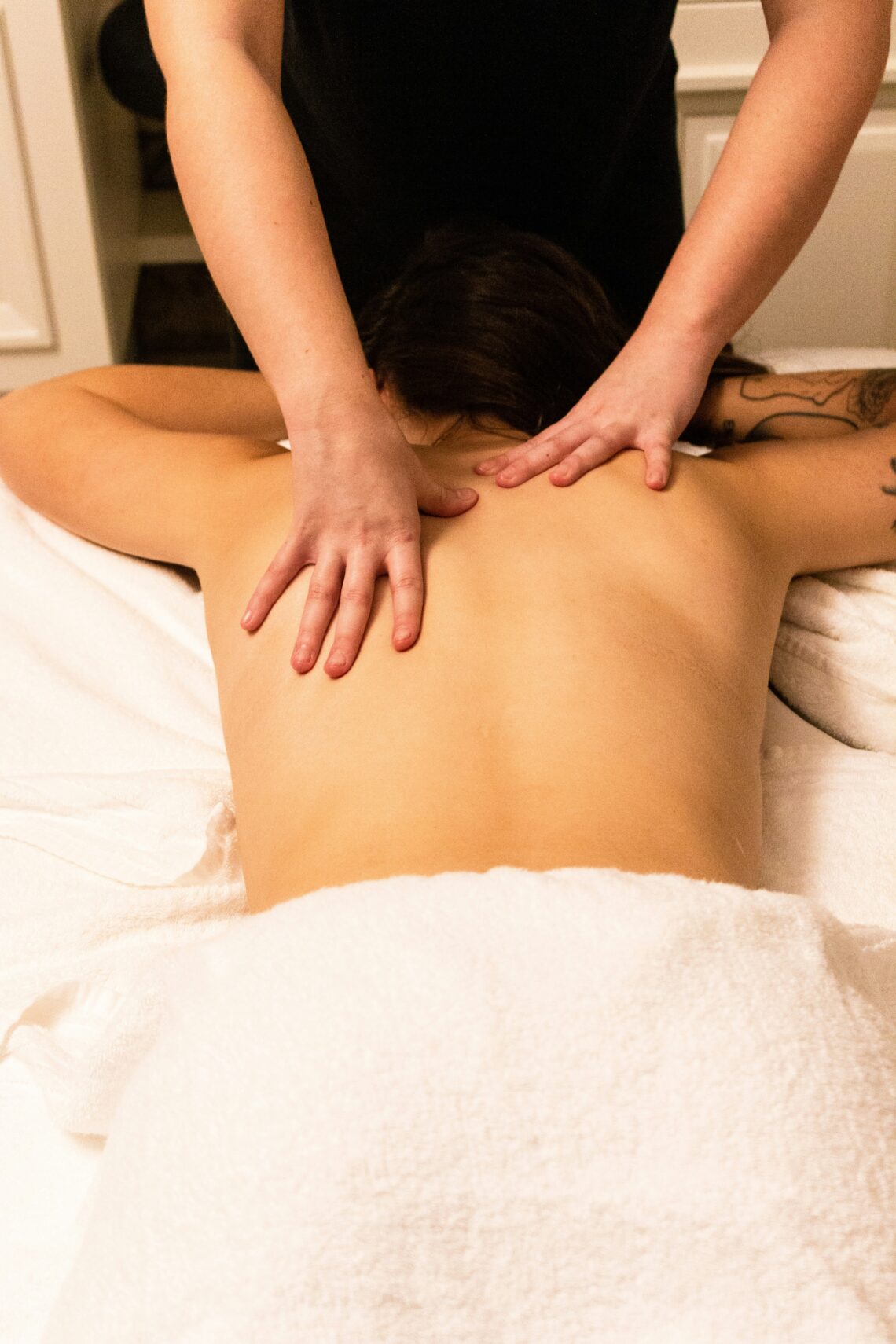In today’s fast-paced world, finding time to unwind and de-stress is crucial for maintaining physical and mental well-being. One of the most effective ways to achieve this sense of calm and rejuvenation is through relaxation massage.
Whether you’re new to massage therapy or looking to deepen your knowledge of its techniques and benefits, this guide will take you through everything you need to know. From the different styles of relaxation massages to the health benefits they provide, we’ll explore why making massage a part of your routine can have a lasting, positive impact.
What is Relaxation Massage?
Relaxation massages, also known as Swedish massage, focus on providing a gentle and soothing experience that helps you unwind and release tension. Unlike deep tissue massage or sports massage, which targets deeper layers of muscle and are used to treat specific injuries, relaxation massages use lighter pressure and slower strokes.
The primary goal is to promote a state of calmness in both the body and mind. This type of massage is ideal for those who want to alleviate stress, improve circulation, and enhance their overall sense of well-being.
Key Techniques of Relaxation Massage
Relaxation massages incorporate several fundamental techniques that work together to deliver a calming experience. Here’s a breakdown of the most common techniques used:
Effleurage
This is a smooth, gliding stroke used at the beginning and end of the massage. It helps warm up the muscles and prepares the body for deeper work.
Petrissage
A kneading technique that targets the muscles more directly. Petrissage helps release tension and improves circulation to the tissues.
Tapotement
A light tapping or rhythmic chopping motion is applied with the edge of the hands. This technique can stimulate nerve endings and increase blood flow.
Friction
Circular or linear rubbing motions are used to create heat and reduce tightness in the muscles. This is often applied to specific areas where more focus is needed.
Vibration
A shaking or vibrating movement is applied with the fingertips or palms to promote relaxation and release energy blockages in the body.
Benefits of Relaxation Massage
While relaxation massages may not be as intense as other types of massage, they offer numerous benefits for both the mind and body. Some of these include:
Physical Benefits
Relaxation massages offer a variety of physical benefits that contribute to overall health and well-being. Here are some of the top advantages:
Reduces Muscle Tension
Muscle tension is one of the most common physical complaints today, whether caused by poor posture, stress, or overuse. Relaxation massages help to loosen tight muscles and improve flexibility, providing relief from aches and discomfort.
Improves Circulation
The slow, gentle strokes of relaxation massages stimulate blood flow, which can enhance oxygen and nutrient delivery to the tissues. Better circulation can help with faster recovery from injuries and promote healthier skin and muscles.
Supports Immune Function
Massage can stimulate the lymphatic system, which plays a critical role in immune function by helping to remove toxins from the body. Regular massage sessions may contribute to a stronger immune system and reduced frequency of illness.
Reduces Pain
Many people turn to relaxation massages as a way to manage chronic pain conditions such as arthritis or fibromyalgia. By increasing circulation and releasing endorphins, massage can help diminish pain and improve comfort.
Mental and Emotional Benefits
While the physical benefits of relaxation massages are significant, its impact on mental health should not be overlooked. Here’s how relaxation massage can improve your mental well-being:
Lowers Stress and Anxiety
One of the primary reasons people seek out relaxation massage is to reduce stress. The calming environment, combined with gentle touch, helps to lower cortisol levels the stress hormone while increasing levels of serotonin and dopamine, which promote a sense of well-being and relaxation.
Enhances Sleep Quality
A regular relaxation massage routine can lead to improved sleep. By releasing tension and promoting relaxation, massage therapy makes it easier for the body and mind to wind down, contributing to deeper and more restful sleep.
Improves Mood
Massage has been shown to have a positive effect on mood. Regular sessions can help manage symptoms of depression and anxiety by promoting relaxation and reducing the physical and mental symptoms of these conditions.
Increases Mindfulness and Body Awareness
When receiving a massage, you become more in tune with your body. It’s an opportunity to connect with yourself and notice areas of tension or discomfort. This increased awareness can help you develop better habits and make more mindful choices when it comes to self-care.
Choosing the Right Massage Therapist
Finding the right massage therapist is key to having a positive and effective experience. Here are some things to consider when choosing a massage therapist:
Credentials
Ensure the therapist is licensed and has formal training in the type of massage you’re seeking.
Experience
Ask about their experience with relaxation massage specifically. An experienced licensed massage therapist will have a deep understanding of the massage techniques that best promote relaxation and stress relief.
Comfort
You should feel comfortable communicating your preferences and needs with your therapist. A good therapist will be responsive to your feedback during the session.
Ambiance
The environment where the massage takes place should be quiet, clean, and conducive to relaxation. Consider factors like lighting, music, and temperature.
Local Recommendations
Ask for recommendations from friends or family members who have had positive experiences with a massage therapist. For instance, finding a local skilled therapist, such as those at Tucson Massage Services, can make all the difference in your experience, helping you achieve the ultimate state of relaxation and balance.
Preparing for Your Relaxation Massage
When going for a relaxation massage, it’s important to prepare yourself mentally and physically. Here are some tips to ensure you get the most out of your session:
Before the Session
To maximize the benefits of your relaxation massage, it’s helpful to take some steps before your appointment:
Hydrate
Drinking water before your session helps prepare your muscles and tissues for massage.
Avoid Eating Heavy Meals
Try to avoid eating a large meal immediately before your session, as it can leave you feeling uncomfortable during the massage.
Arrive Early
Arriving early gives you time to relax and transition from the busy outside world to the calming environment of the massage room.
During the Session
Here are some tips to make the most out of your massage session:
Communicate
Let your massage therapist know if the pressure is too light or too firm. They can adjust massage techniques to suit your comfort level.
Breathe Deeply
Focusing on deep breathing during the massage can enhance the relaxation process, helping you to release tension more effectively.
Stay Present
It’s easy to let your mind wander during a massage, but staying present can increase your enjoyment and the overall benefits.
After the Session
Once your session is complete, here’s how to continue benefiting from your massage:
Drink Water
Hydration is essential after a massage to help flush out toxins that may have been released during the session.
Take it Easy
Try to avoid intense activities right after your massage. Give your body time to absorb the benefits by resting or engaging in gentle activities like walking or stretching.
Incorporating Relaxation Massage Into Your Routine
When it comes to incorporating relaxation massage into your routine, consistency is key.
Frequency Matters
To truly enjoy the long-term benefits of relaxation massage, consider incorporating it into your regular self-care routine. How often you should get a massage depends on your personal needs and lifestyle:
- Weekly
- Biweekly
- Monthly
- At-Home Techniques
- If you can’t get to a massage therapist as often as you’d like, there are massage techniques you can use at home to promote relaxation between sessions:
- Self-Massage
- Stretching
- Breathing Exercises
Who Can Benefit from Relaxation Massage?
Relaxation massage is suitable for most people, regardless of age or physical condition. However, certain groups may find particular benefits:
Busy Professionals
If you’re dealing with long hours at work and high levels of stress, regular relaxation massage can provide a much-needed escape. It can also help alleviate tension and stiffness in the muscles caused by prolonged sitting or standing.
Athletes
Whether you’re a professional athlete or just enjoy staying active, relaxation massage can be beneficial for aiding muscle recovery and reducing the risk of injury. It can also improve flexibility and range of motion.
Pregnant Women
Pregnancy can bring about a lot of physical and emotional changes for women. Relaxation massage can help relieve common discomforts such as back pain, swelling, and fatigue. It may also help promote better sleep and reduce anxiety during this important time.
Elderly Individuals
As we age, our bodies tend to become more prone to stress and tension. Regular relaxation massage can help improve circulation, reduce joint pain, and increase feelings of relaxation and well-being for elderly individuals.
Mental Health
In addition to physical benefits, relaxation massage can also have positive effects on mental health. It can reduce symptoms of anxiety and depression, improve overall mood, and provide a sense of calm and relaxation.
The Healing Power of Relaxation Massage
Adding relaxation massage to your self-care routine offers numerous physical, mental, and emotional benefits. Whether you want to reduce stress, improve sleep, or boost your overall well-being, this soothing massage promotes relaxation and rejuvenation.
Whether new to massage or an experienced fan, take time to enjoy this gentle therapy and see how it can transform your life.
Read more lifestyle and wellness articles at ClichéMag.com
Images provided by Deposit Photos, BingAI, Adobe Stock, Unsplash, Pexels, Pixabay & Creative Commons




